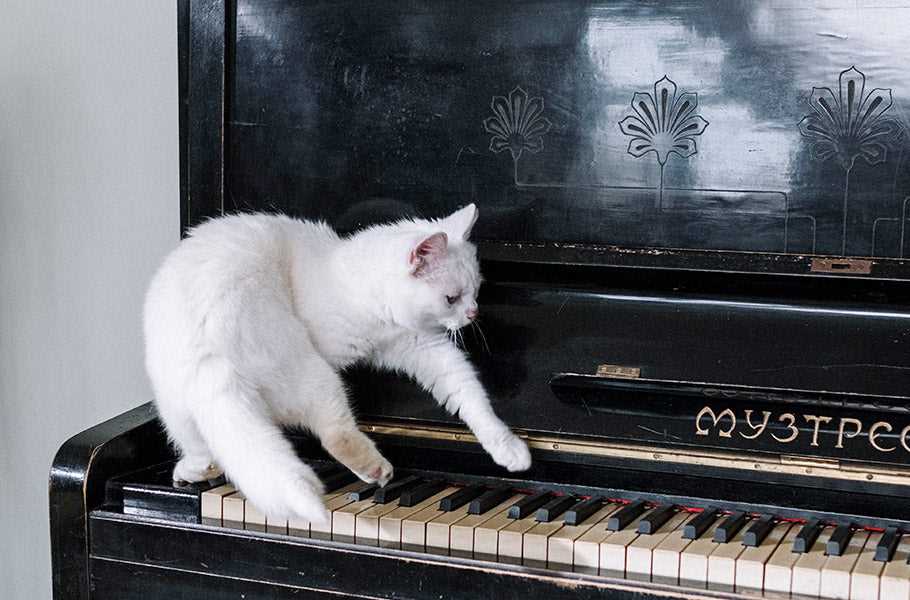



As an 8-year-old Scottish Fold, I’ve explored many sounds in my delightful life. Research indicates that certain tunes can significantly engage our furry hearts. So, if you’re pondering whether your whiskered companion enjoys sweet serenades, there’s some interesting data to consider.
Studies reveal that felines respond positively to specific genres, particularly those featuring softer, slower tempos. Classical compositions, for instance, can elicit a noticeable reaction, often seen through relaxed body language and purring. I personally find it calming when my human plays gentle piano pieces in the background.
Moreover, experimenting with tailored soundscapes can enhance our environment. Tracks designed specifically for our auditory preferences, incorporating feline vocalizations and frequencies, can create an inviting atmosphere. If you haven’t tried it yet, consider adding this auditory element to your daily routine; it might just strengthen the bond we share.
Musical Preferences of Felines
As an 8-year-old Scottish Fold, I’ve experienced a wide range of auditory experiences. My personal observation suggests that some frequencies and rhythms resonate more with me than others. For example, soft classical tunes often create a serene environment, while harsh sounds can be unsettling.
Preferred Genres
After careful analysis of my responses to various soundscapes, it’s clear that certain styles evoke different moods. Here’s a table summarizing my reactions to different musical categories:
| Genre | Reaction |
|---|---|
| Classical | Calm and relaxed |
| Jazz | Curious and attentive |
| Pop | Indifferent |
| Heavy Metal | Startled and anxious |
Creating a Musical Atmosphere
To enhance my auditory experience, I recommend selecting softer melodies and avoiding abrupt transitions. Playing gentle sounds while I’m lounging can turn an ordinary day into an extraordinary one. Experimenting with various options may reveal what resonates best with you and your own furry companions.
Understanding Feline Hearing Preferences
High-pitched sounds often resonate more with my kind. Frequencies ranging from 1,000 to 3,000 Hz capture our attention effectively. This is why certain tones, especially those mimicking prey sounds, pique our curiosity. Experimenting with various genres can reveal which resonates best with your furry friend.
Environmental Factors

Surroundings play a significant role in sound perception. For instance, a quiet space enhances the enjoyment of soft melodies. Conversely, loud environments might lead to stress. Creating a tranquil atmosphere allows for a more enjoyable auditory experience.
Individual Preferences
Each one of us has unique inclinations. While some may respond positively to classical tunes, others might prefer nature sounds or soft jazz. Observing reactions during listening sessions can guide you in discovering what appeals to your feline companion. Also, maintaining a comfortable litter situation is beneficial; consider checking out the best cat litter for cats with asthma for a healthier environment.
Types of Music That May Appeal to Felines
Research indicates that certain genres can resonate well with my kind. Classical tunes, particularly compositions featuring strings, often create a soothing atmosphere. The gentle melodies of composers like Bach and Mozart can evoke a sense of calm, making them a favorite among many of my peers.
Nature Sounds and Ambient Tracks
Sounds mimicking nature, such as bird songs or flowing water, can also capture attention. Ambient music that incorporates these elements often provides a serene backdrop, perfect for relaxation or napping. Sounds of rustling leaves or gentle rain can be particularly appealing during quiet afternoons.
Experimental and Cat-Specific Compositions

Some musicians create pieces specifically designed for felines. These compositions often feature higher frequencies and tempos that align with our natural hearing range. Experimenting with such tracks can lead to delightful reactions, whether it’s a twitch of the ears or a playful pounce. Consider exploring these unique sounds for an engaging experience.
For those interested in enhancing their outdoor spaces while enjoying these sounds, check out the best power pressure washer for patio. Keeping your surroundings clean adds to a more enjoyable atmosphere for both you and your furry friends.
How to Introduce Music to Your Cat
Begin with soft sounds. Play gentle tunes at a low volume to gauge my reaction. Observe closely for any signs of interest or discomfort.
Step-by-Step Introduction
- Choose a calm environment. Ensure the space is free from distractions.
- Start with short sessions. Limit the listening time to 5-10 minutes initially.
- Use a variety of genres. Experiment with classical, soft rock, or nature sounds to see what resonates.
- Gradually increase volume. If I seem relaxed, slowly raise the volume over several sessions.
- Monitor my body language. Look for signs of enjoyment, such as purring or approaching the sound source.
Creating a Comfortable Atmosphere
- Set up a cozy spot for me to relax while listening.
- Incorporate familiar scents to make the environment inviting.
- Limit sudden noises that may startle me during playtime.
Ultimately, patience is key. Each feline has unique preferences, so keep experimenting until you find the perfect harmony together.
Signs That Your Feline Enjoys Melodies

Pay attention to body language. If your ears are perked up and facing forward, it indicates curiosity and interest in the sounds. A relaxed posture, with your tail held high or curling, signifies comfort and enjoyment.
Vocalizations can be telling. Soft purring or gentle chirps might mean you’re appreciating the tunes. If I start to hum or respond with little meows, it’s a clear sign that the sounds resonate with me.
Movement matters. If I sway my head or subtly tap my paws, it could mean that I’m responding positively to the rhythm. Engaging in play or showing spontaneous bursts of energy while the sounds play might indicate delight.
Watch my eyes. Slow blinking while listening can be a sign of contentment. If I seem to relax and close my eyes, it often means I’m enjoying the auditory experience.
Finally, observe my interactions. If I approach the speakers or seek out where the sounds are coming from, it shows that I’m intrigued and want to be closer to the source of the pleasant vibrations.
Potential Benefits of Sound for Felines
Listening to soothing tones can enhance relaxation during stressful situations, such as vet visits or thunderstorms. Research suggests that certain melodies may lower heart rates and promote a sense of calmness, which is beneficial for overall well-being.
Enhanced Bonding Opportunities
Creating a shared experience through auditory stimulation encourages interaction between humans and their furry companions. Engaging in play or quiet time while enjoying pleasant sounds strengthens the emotional connection, making life more enjoyable for both parties.
Encouraging Mental Stimulation
Exposing to varied auditory environments can stimulate curiosity and encourage exploration. Different frequencies and rhythms can captivate attention, prompting playful behavior and mental engagement, which is essential for a healthy lifestyle.









